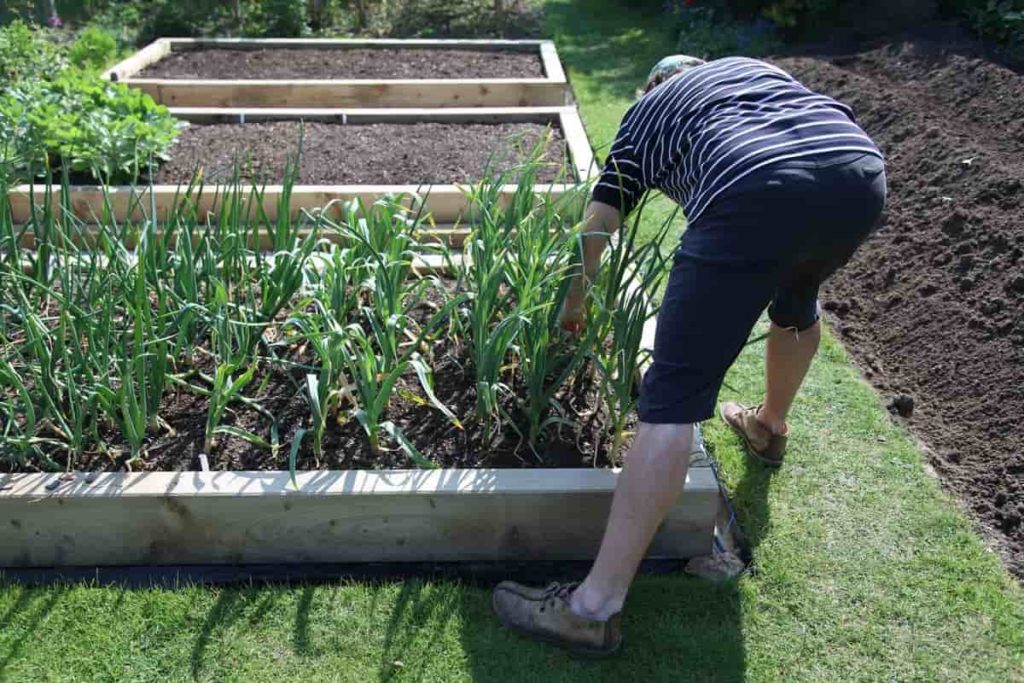In USDA Hardiness Zone 6, gardening is both an art and a science. It requires careful preparation and the ability to adapt to the various weather conditions that are specific to the region. Gardeners in Zone 6 are faced with a variety of weather conditions, including cold winters, warm summers, and unpredictable frost dates. This zone encompasses a wide range of locations, including Nashville, Tennessee; St. Louis, Missouri; and significant portions of Ohio, Pennsylvania, and New York.
It is absolutely necessary to possess a trustworthy planting guide for Zone 6 in order to flourish in this zone. This guide not only offers you a comprehensive calendar and timetable, but it also provides you with the skills and the information you need to successfully traverse seasonal transitions, maximize yields, and overcome problems such as late frosts or summer heatwaves, among other things. Understanding the best times to plant and the chores that need to be done for upkeep will put you on the right track to achieve success in gardening, regardless of whether you are cultivating shrubs, flowers, or vegetables.
Master Your Garden in Zone 6: Comprehensive Planting Timeline and Tips
1. Mastering Zone 6 Gardening: A Complete Planting Schedule and Seasonal Calendar for Success
When gardening in USDA Hardiness Zone 6, it is essential to have a strong awareness of the region’s distinctive climate patterns, which include temperatures that are chilly during the winter and warm during the summer. In addition to places such as Nashville, Tennessee, and St. Louis, Missouri, this zone encompasses a wide range of locations across the United States, including portions of Ohio, Pennsylvania, and even southern New York. It is vital to adapt your planting schedule in accordance with the specifics of each zone within Zone 6, as there may be modest changes in the dates of frost and the growing conditions.

The following is a planting calendar that is particular to Zone 6 and is organized month by month:
| Month | Cool-Season Crops | Warm-Season Crops | Maintenance Tasks |
| January | Plan garden layout | – | Order seeds, clean tools. |
| February | Start seeds indoors | – | Prepare soil beds. |
| March | Spinach, lettuce | – | Mulch beds, prune shrubs. |
| April | Peas, radishes | Tomatoes (indoors) | Harden off seedlings. |
| May | Carrots, beets | Tomatoes, peppers | Plant outdoors post-frost. |
| June | – | Cucumbers, squash | Water deeply, weed regularly. |
| July | – | Beans, melons | Harvest, monitor pests. |
| August | Broccoli, cabbage | – | Deadhead flowers, compost |
| September | Kale, arugula | – | Sow cover crops. |
| October | Garlic, onions | – | Clean up debris, prep for winter |
| November | – | – | Protect perennials, mulch. |
| December | Plan next year’s garden | – | Reflect and rest. |
By adhering to this planting schedule and calendar for zone 6, you will be able to ensure that your garden is flourishing throughout the entire year. The following tips will assist you in adjusting to the conditions of your location and maximizing your yield, regardless of whether you are located in the Midwest, Northeast, or Southeast of the United States.
2. Zone 6 Planting Guide: Expert Tips to Plan Your Garden with a Detailed Schedule & Calendar
If you want your garden to be successful in Zone 6, you must first determine when the last frost will occur and then choose plants that are appropriate for the climate of the area. This zone includes cities such as Louisville, Kentucky, and Des Moines, Iowa, both of which have microclimates that are modest variations from one another. An example of this would be that regions that are located near to huge bodies of water could have winters that are warmer than those that are located inland. When it comes to developing a thorough planting schedule that is unique to your particular region, having a solid understanding of these intricacies is essential.
Based on the recommendations of several experts, the following is a breakdown of what to plant and when to grow it:
| Task/Plant | Early Spring (Mar-Apr) | Late Spring (May) | Summer (Jun-Aug) | Fall (Sep-Oct) |
| Vegetables | Spinach, peas, kale | Tomatoes, peppers | Zucchini, cucumbers | Garlic, broccoli, cabbage. |
| Flowers | Pansies, snapdragons | Marigolds, zinnias | Sunflowers, cosmos | Ornamental kale, mums. |
| Shrubs/Trees | Prune fruit trees | Plant new shrubs | Water deeply, fertilize | Mulch roots, prepare for dormancy. |
Late winter, during the months of February and March, is the time of year that experts recommend planting seeds indoors for crops such as peppers, tomatoes, and eggplants. After the date of the last frost, these warm-season plants need a significant amount of time to mature before they may be transplanted outside. On the other hand, cool-season crops like peas, radishes, and lettuce can be planted directly into the ground at the beginning of the growing season. If you design your planting schedule in accordance with the local weather patterns as well as the requirements of certain plants, you will be in a good position to achieve success, regardless of where you are located in Zone 6.
3. When to Plant What in Zone 6: An Easy-to-Follow Schedule and Growing Calendar Explained
One of the most often asked concerns among gardeners in Zone 6 is how to determine the appropriate time to plant certain plants. The central highlands of Tennessee and the bustling suburbs of Philadelphia, Pennsylvania, are just two examples of the many landscapes that are encompassed within this zone. Because Zone 6 often receives first frost dates between the end of September and the beginning of October, timing is extremely important for optimum harvests. This is despite the fact that each zone is unique.
One example is that if you live close to Cincinnati, Ohio, you can discover that your growing season starts sooner than someone who lives in Buffalo, New York. This is because of the changes in elevation and the proximity to lakes that exist between the two locations. Your ability to keep on track is ensured by a schedule that is simple to follow. Listed below is a condensed version of the planting agenda:
| Crop Type | Start Indoors (Feb-Mar) | Direct Sow (Apr-May) | Harvest Window (Jun-Sep) | Overwinter Prep (Oct-Nov) |
| Leafy Greens | – | Lettuce, spinach | Continuous harvest | Cover crops or mulch beds. |
| Root Crops | – | Carrots, radishes | Midsummer to early fall | Store roots, plan rotation |
| Nightshades | Tomatoes, peppers | – | Late summer to early fall | Remove plants, compost debris. |
| Herbs | Basil, parsley | Cilantro, dill | Throughout summer | Dry herbs, save seeds. |
During the month of March, you should concentrate on planting cool-season crops such as spinach and carrots. Planting heat-loving vegetables like zucchini and cucumbers should be done by the end of April or the beginning of May. In addition to making gardening more straightforward, adhering to this methodical strategy guarantees abundant harvests throughout the entire growing season.
4. Zone 6 Planting Timeline: Month-by-Month Calendar and Scheduling Secrets
In order to maintain the productivity of your garden throughout the year, creating an ultimate planting calendar for Zone 6 requires segmenting chores by month. Every region has its own peculiarities, from Pittsburgh’s cold springs to Nashville’s muggy summers, but the fundamentals are always the same. Preparation and consistency are crucial.
For scheduling secrets, check this comprehensive month-by-month table:
| Month | Seeds to Start Indoors | Outdoor Planting | Garden Maintenance | Special Notes |
| January | Order supplies | – | Clean tools, organize space | Dream big—plan your ideal garden. |
| February | Tomatoes, peppers | – | Test soil pH, amend as needed | Start small pots under grow lights. |
| March | Basil, eggplant | Peas, lettuce | Mulch pathways, aerate soil | Watch for signs of spring thaw. |
| April | Squash, melons | Radishes, spinach | Weed diligently, stake plants | Monitor weather for late frosts. |
| May | – | Tomatoes, peppers | Water consistently, side-dress | Celebrate the start of summer!. |
| June | – | Beans, cucumbers | Prune excess growth, check pests | Enjoy fresh produce daily. |
| July | – | – | Harvest, deadhead flowers | Stay hydrated—it’s hot outside!. |
| August | – | Broccoli, cabbage | Compost waste, sow cover crops | Prepare for fall gardening. |
| September | – | Garlic, onions | Clean up spent plants | Preserve surplus veggies. |
| October | – | – | Mulch perennials, protect roots | Reflect on successes/challenges. |
| November | – | – | Rake leaves, store equipment | Rest and recharge for next year. |
| December | – | – | Plan improvements, order seeds | Dream about next season’s bounty. |
5. Unlocking the Best Planting Dates with a Step-by-Step Calendar
Especially when considering the region’s many temperatures, such as the humid summers of Nashville and the frigid winters of Buffalo, gardening in Zone 6 can appear overwhelming if there is no clear blueprint to follow. Gardeners should have their primary attention on determining the optimal planting dates for their particular region in order to simplify the situation. To ensure that you plant at the best period for development and harvest, this step-by-step calendar will ensure that you do so.

You can use the following planting calendar, which is specifically designed for Zone 6:
| Crop Type | Indoors Start (Weeks Before Last Frost) | Outdoor Planting (After Frost) | Harvest Window | Special Tips |
| Cool-Season | – | Early Mar-Apr | Apr-May | Use row covers for frost protection. |
| Warm-Season | 6-8 weeks before last frost | Mid-May | Jul-Sep | Harden off seedlings gradually. |
| Herbs | 4-6 weeks before last frost | Late May | Continuous | Basil loves warmth; cilantro prefers cooler temps. |
| Perennials | – | Early spring or fall | Year-round blooms | Mulch heavily in winter for insulatioin. |
6. Maximizing Yield in Zone 6: How to Use a Planting Schedule and Calendar Like a Pro
It is necessary for gardeners in Zone 6 to implement a planting schedule that takes into account both the chilly and warm seasons in order to achieve the highest possible output. Zone 6, which extends from Des Moines to Philadelphia, has a growing season that is lengthy enough to develop two rounds of crops (provided that they are maintained correctly). One strategy for maintaining the productivity of your garden throughout the year is to engage in succession planting, which involves spreading fresh seeds every few weeks.
Below is a pro-level planting schedule designed to boost productivity:
| Planting Round | Cool-Season Crops | Warm-Season Crops | Second Cool-Season Crops | Notes |
| First Round | Spinach, lettuce, peas | Tomatoes, peppers | Broccoli, cabbage | Begin indoors for warm-season crops. |
| Second Round | Radishes, carrots | Beans, squash | Kale, arugula | Direct sow after first harvest. |
| Third Round | Garlic, onions | – | – | Overwinter garlic for early spring harvest. |
Your garden will experience less downtime and more constant production if you use this strategy. If you combine it with healthy soil and effective pest control, you will be astounded by the amount of food or flowers that you are able to cultivate in a single growing season.
7. From Spring to Fall: The Definitive Zone 6 Planting Guide with Timely Schedule Insights
There is a wide range of landscapes that are included in Zone 6, ranging from the undulating farmland of Kentucky to the metropolitan landscapes of Pittsburgh. It does not matter where you are located; the key to successful gardening is having a grasp of the seasonal shifts that are specific to this region. In the spring, there are prospects for crops that thrive during the mild season, while the summer is the best time to grow veggies that thrive in hot conditions. The season is subsequently brought to a close with root crops and hardy greens during the fall.
With the help of this precise planting table, you will be able to breeze through each season:
| Season | Key Tasks | Vegetables to Focus On | Flowers/Shrubs | Maintenance Checklist |
| Spring | Soil prep, sowing seeds | Lettuce, radishes | Pansies, tulips | Remove weeds, add compost. |
| Summer | Transplanting, watering | Tomatoes, cucumbers | Sunflowers, marigolds | Prune shrubs, monitor pests. |
| Fall | Cleanup, cover crops | Kale, carrots | Mums, ornamental cabbage | Mulch beds, protect perennials. |
8. Plan Like a Pro: Zone 6 Planting Calendar Breakdown for Vegetables, Flowers, and Shrubs
Thinking ahead is an essential part of planning like a pro, and this applies not just to veggies but also to flowers and shrubs that beautify your landscape. It is helpful to have a planting calendar in order to coordinate duties that fall under a variety of plant categories, regardless of whether you are located in Louisville or central Pennsylvania. In order to create a space that is not only utilitarian but also aesthetically pleasing, a well-rounded garden strikes a balance between the cultivation of edible crops and the cultivation of decorative beauty.

Here’s a breakdown of what to plant when, categorized by type:
| Plant Type | Spring Planting | Summer Planting | Fall Planting | Winter Prep |
| Vegetables | Peas, spinach, lettuce | Tomatoes, peppers | Kale, broccoli, carrots | Garlic, cover crops. |
| Flowers | Pansies, snapdragons | Zinnias, cosmos | Mums, asters | Dormant pruning, mulching. |
| Shrubs/Trees | Fruit trees, hydrangeas | Butterfly bushes | Evergreens, holly | Protect roots, apply dormant oil. |
9. Zone 6 Growing Seasons Demystified: A Comprehensive Planting Schedule and Calendar Guide
Deciphering Zone 6’s growth seasons is essential to understanding its gardening difficulties. Even if the zone’s frost dates are similar, planting timings can be affected by regional variables including elevation, proximity to bodies of water, and urban heat islands. For example, gardeners who live close to Lake Erie may have milder winters than those who live in rural locations further inland.
Refer to this comprehensive planting schedule to stay on track:
| Timeframe | Cool-Season Tasks | Warm-Season Tasks | Fall/Winter Tasks | Regional Considerations |
| Jan-Feb | Order seeds, plan layout | Start seeds indoors | Clean tools, prune trees | Watch for microclimates. |
| Mar-Apr | Sow peas, lettuce | Harden off seedlings | Mulch beds, aerate soil | Adjust for late frosts. |
| May-Jun | Plant carrots, beets | Set out tomatoes, peppers | Water deeply, weed regularly | Monitor heat waves in cities. |
| Jul-Aug | Harvest greens | Pick beans, cucumbers | Deadhead flowers, compost | Protect against droughts. |
| Sep-Oct | Sow kale, spinach | Harvest pumpkins, squash | Sow cover crops, clean debris | Prepare for shorter daylight. |
| Nov-Dec | Plant garlic, onions | – | Mulch perennials, rest | Reflect on lessons learned. |
10. The Smart Gardener’s Zone 6 Blueprint: Perfect Planting Times with an Interactive Calendar
Optimizing planting schedules through the use of data-driven solutions is an essential component of smart gardening in Zone 6. Utilizing an interactive calendar allows you to maintain organization and efficiency, regardless of whether you live in a rural area of Tennessee or a suburban area of Ohio. The following is a table for pinpointing the ideal dates to plant:
| Month | Edibles | Ornamentals | Garden Care | Tools Needed |
| January | Plan crop rotation | Research flower combos | Sharpen tools, test soil | Notebook, pH tester. |
| February | Start tomato seeds | Pot up bulbs | Inspect irrigation systems | Grow lights, pots. |
| March | Direct sow peas | Plant pansies outdoors | Spread compost, aerate soil | Shovel, rake. |
| April | Transplant lettuce | Add annuals to borders | Weed pathways, edge beds | Hand trowel, gloves. |
| May | Set out peppers, eggplants | Stake tall perennials | Install trellises, mulch | Twine, stakes. |
| June | Harvest strawberries | Deadhead roses | Water deeply, check for pests | Hose, spray nozzle. |
11. How Weather Impacts Zone 6 Gardens: Crafting a Foolproof Planting Schedule & Calendar
The weather is a significant factor in the success of gardening, and Zone 6 is not an exception to this rule. You may create a planting schedule that is flawless by first gaining an awareness of how the weather affects your garden, which includes anything from late spring frosts to sudden summer heatwaves. For instance, regions that are located in close proximity to major bodies of water, such as Lake Michigan or the Ohio River, could enjoy temperatures that are more moderate than those that are found inland. There is a possibility that urban areas such as Pittsburgh could reap the benefits of the “heat island” effect, which extends the growing season by a marginal amount.
Here’s a weather-conscious planting calendar tailored for Zone 6:
| Weather Event | Crops Affected | Preventive Actions | Alternative Solutions | Notes |
| Late Frosts | Tomatoes, peppers | Use row covers, cloches | Delay transplanting outdoors | Monitor local forecasts closely. |
| Heatwaves | Lettuce, spinach | Provide shade cloth | Switch to heat-tolerant crops | Basil thrives in hot conditions. |
| Heavy Rain | Root vegetables | Improve drainage | Elevate raised beds | Avoid waterlogged soil issues. |
| Drought | Beans, cucumbers | Mulch heavily | Install drip irrigation | Water deeply, less frequently. |
12. Zone 6 Gardening Made Simple: Essential Tools, Tips, and a Ready-to-Use Planting Calendar
Despite the erratic climate of Zone 6, gardening doesn’t have to be difficult. Anyone may get excellent results if they have the proper equipment, advice, and a ready-to-use planting calendar. Simplicity is essential whether you’re in upstate New York or St. Louis. Assemble necessary equipment first, such as pruning shears, a robust trowel, and a dependable watering system. Then, to keep organized, adhere to this simple calendar:
| Task/Plant | Early Spring (Mar-Apr) | Late Spring (May) | Summer (Jun-Aug) | Fall (Sep-Oct) |
| Cool-Season | Sow lettuce, peas | Harvest greens | – | Replant kale, spinach. |
| Warm-Season | Start indoors | Transplant outdoors | Harvest tomatoes, peppers | Remove spent plants. |
| Perennials | Divide hostas, daylilies | Plant new varieties | Deadhead blooms | Mulch roots for winter. |
| Lawn Care | Aerate, overseed | Fertilize | Mow regularly | Rake leaves, prep for dormancy. |
13. Seasonal Strategies for Zone 6: Mastering Your Planting Schedule with a Customizable Calendar
In Zone 6, managing your planting calendar requires the use of seasonal methods. Planning must be flexible due to the region’s four unique seasons, particularly when switching between them. Early spring, for example, is dominated by cool-season crops, whereas summer is dominated by warm-season favorites. Hardy greens can be planted again in the fall, and winter is the best time to recuperate and get ready for the next cycle.

A customisable calendar to help you in your seasonal endeavors is provided below:
| Season | Key Tasks | Vegetables to Focus On | Flowers/Shrubs | Special Tips |
| Spring | Soil prep, sowing seeds | Peas, lettuce, radishes | Pansies, tulips | Use row covers for frost protection. |
| Summer | Transplanting, watering | Tomatoes, peppers | Zinnias, marigolds | Prune excess growth, monitor pests. |
| Fall | Cleanup, cover crops | Kale, carrots | Mums, asters | Mulch heavily to protect roots. |
| Winter | Plan, order supplies | Garlic | Dormant pruning | Reflect on successes/challenges. |
14. A Year-Round Approach to Zone 6 Gardening: Navigating the Ideal Planting Schedule and Timing
Keeping active with your garden throughout each season is required if you want to take a year-round approach to gardening in Zone 6. Planning and preparation, planting, and harvesting are just some of the activities that are available to you each month. For instance, the month of January is ideal for conceiving of designs and placing seed orders, whereas the month of July is centered on getting the most out of yields and controlling pests.
To help you stay on track, here is a planting schedule for the entire year:
| Month | Planning/Prep Tasks | Planting Tasks | Harvesting Tasks | Maintenance Checklist |
| January | Order seeds, plan layout | – | – | Clean tools, organize space. |
| February | Start seeds indoors | – | – | Test soil pH, amend as needed. |
| March | Prepare beds, prune trees | Sow peas, lettuce | – | Mulch pathways, aerate soil. |
| April | Harden off seedlings | Plant radishes, spinach | Early greens | Weed diligently, stake plants. |
| May | Transplant outdoors | Set out tomatoes, peppers | – | Water consistently, side-dress. |
| June | – | Plant beans, cucumbers | Strawberries, early herbs | Prune excess growth, check pests. |
| July | – | – | Tomatoes, peppers, zucchini | Harvest daily; deadhead flowers. |
| August | – | Sow broccoli, cabbage | Beans, cucumbers | Compost waste, sow cover crops. |
| September | – | Plant garlic, onions | Pumpkins, squash | Clean up debris, prep for fall. |
| October | – | – | Kale, carrots | Mulch perennials, protect roots. |
| November | – | – | – | Rake leaves, store equipment. |
| December | Reflect, plan improvements | – | – | Dream about next season’s bounty. |
15. What Every Zone 6 Gardener Needs to Know: A Practical Guide to Planning with a Planting Calendar
Every gardener in Zone 6 needs a thorough manual to help them navigate the complexities of planting schedules and plans. The diverse terrain of this region, which stretches from the industrial metropolis of Pennsylvania to the undulating hills of Tennessee, necessitates flexibility and adaptation. Making decisions is made easier and more enjoyable when you use a planting calendar as a guide.
This useful planting schedule below is intended for gardeners in Zone 6:
| Crop Type | Indoors Start (Weeks Before Last Frost) | Outdoor Planting (After Frost) | Harvest Window | Regional Tips |
| Cool-Season | – | Early Mar-Apr | Apr-May | Use cold frames for extra protection. |
| Warm-Season | 6-8 weeks before last frost | Mid-May | Jul-Sep | Harden off seedlings gradually. |
| Herbs | 4-6 weeks before last frost | Late May | Continuous | Basil loves warmth; cilantro prefers cooler temps. |
| Perennials | – | Early spring or fall | Year-round blooms | Mulch heavily in winter for insulation. |
Conclusion
Having this comprehensive planting guide for Zone 6 at your disposal, you now have everything you require to create a flourishing garden that is adapted to the specific requirements of your location. These materials give you the ability to maintain organization and productivity throughout the year, whether it is through the mastery of frost dates, the creation of a flawless planting schedule, or the utilization of a calendar that is broken down month by month.
This guide will ensure that you are always one step ahead of the game, whether you are planting cool-season crops in the early spring, tending to warm-season favorites during the summer, or getting your garden ready for winter. With the help of this Zone 6 planting calendar and timetable, gardening may be transformed from a challenging endeavor into a gratifying and joyful experience. This is accomplished by combining expert advice, actionable tables, and tactics particular to the region. Your Zone 6 garden is going to flourish if you get your tools together, study your schedule, and get started!






